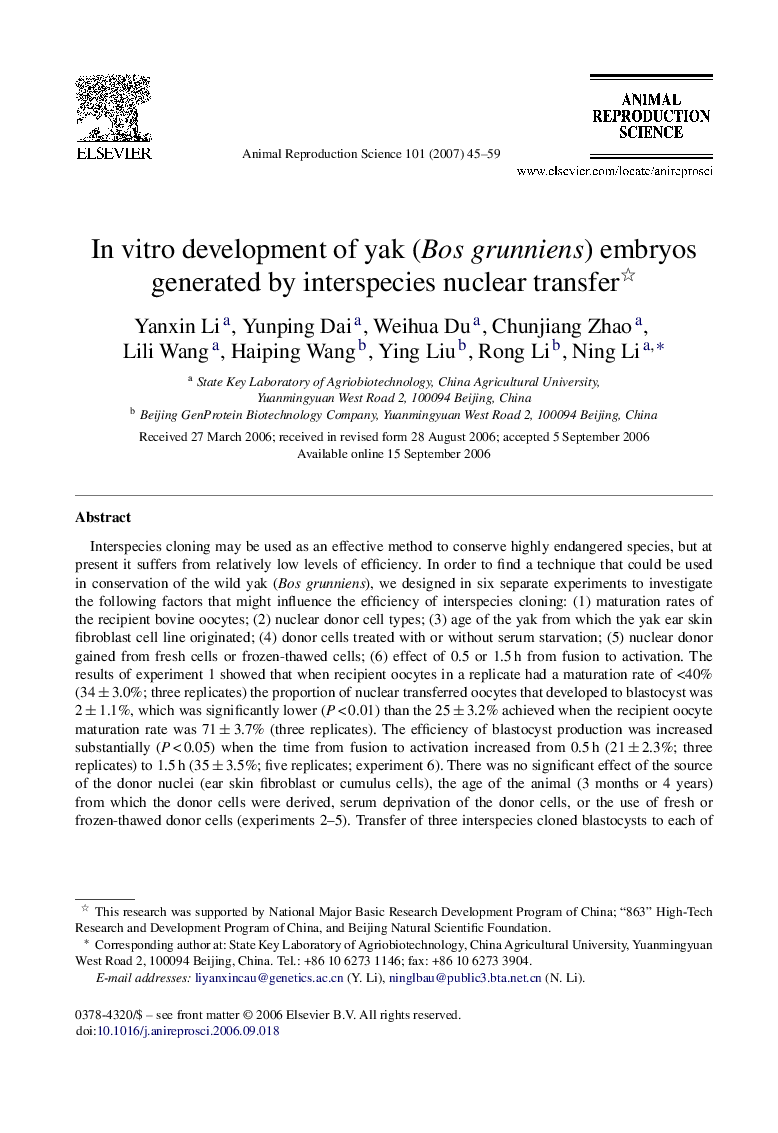| Article ID | Journal | Published Year | Pages | File Type |
|---|---|---|---|---|
| 2074536 | Animal Reproduction Science | 2007 | 15 Pages |
Abstract
Interspecies cloning may be used as an effective method to conserve highly endangered species, but at present it suffers from relatively low levels of efficiency. In order to find a technique that could be used in conservation of the wild yak (Bos grunniens), we designed in six separate experiments to investigate the following factors that might influence the efficiency of interspecies cloning: (1) maturation rates of the recipient bovine oocytes; (2) nuclear donor cell types; (3) age of the yak from which the yak ear skin fibroblast cell line originated; (4) donor cells treated with or without serum starvation; (5) nuclear donor gained from fresh cells or frozen-thawed cells; (6) effect of 0.5 or 1.5 h from fusion to activation. The results of experiment 1 showed that when recipient oocytes in a replicate had a maturation rate of <40% (34 ± 3.0%; three replicates) the proportion of nuclear transferred oocytes that developed to blastocyst was 2 ± 1.1%, which was significantly lower (P < 0.01) than the 25 ± 3.2% achieved when the recipient oocyte maturation rate was 71 ± 3.7% (three replicates). The efficiency of blastocyst production was increased substantially (P < 0.05) when the time from fusion to activation increased from 0.5 h (21 ± 2.3%; three replicates) to 1.5 h (35 ± 3.5%; five replicates; experiment 6). There was no significant effect of the source of the donor nuclei (ear skin fibroblast or cumulus cells), the age of the animal (3 months or 4 years) from which the donor cells were derived, serum deprivation of the donor cells, or the use of fresh or frozen-thawed donor cells (experiments 2-5). Transfer of three interspecies cloned blastocysts to each of 108 bovine recipients resulted in two pregnancies being established that did not survive to day 120 of gestation.
Related Topics
Life Sciences
Agricultural and Biological Sciences
Animal Science and Zoology
Authors
Yanxin Li, Yunping Dai, Weihua Du, Chunjiang Zhao, Lili Wang, Haiping Wang, Ying Liu, Rong Li, Ning Li,
